The world of espionage and mystery often relies on visual cues to create an atmosphere of secrecy. Fonts play a crucial role in this, shaping the perception of hidden messages and clandestine operations. Certain fonts, with their unique characteristics, can instantly evoke a sense of intrigue and confidentiality. This article delves into the fascinating realm of secret fonts, exploring how specific choices like OCR A Extended and Courier New contribute to the aura of mystery surrounding espionage and coded communication.
We’ll examine the distinct features of these fonts, their historical associations with secrecy, and how they are used in various media to convey a sense of hidden knowledge and clandestine activities. From classic spy novels to modern-day thrillers, the impact of these fonts on our perception of mystery is undeniable.
Secret Fonts for Mystery
When it comes to fonts that embody secrecy, certain styles stand out due to their inherent characteristics. These fonts often possess bold, geometric shapes, distinct letterforms, and a minimalist aesthetic that suggests coded communication and hidden meanings. They evoke a sense of professionalism and technicality, hinting at the meticulous planning and execution involved in espionage operations.
The choice of font can significantly influence the tone and atmosphere of a story or visual presentation. A font like OCR A Extended, with its sharp angles and clear readability, can convey a sense of urgency and precision, while Courier New, with its typewriter-like appearance, suggests a more traditional approach to espionage.
OCR A Extended Font
OCR A Extended is a monospaced font designed for optical character recognition (OCR) systems. Its geometric shapes and uniform letter widths make it highly legible even when scanned or digitized. This characteristic has led to its association with secrecy, as it suggests the ability to decipher hidden messages and extract information from seemingly innocuous sources.
The font’s bold, sans-serif design further enhances its sense of mystery. Its lack of decorative elements and straightforward appearance contribute to a feeling of professionalism and technicality, often associated with intelligence agencies and covert operations.
Historical Context
OCR A Extended gained prominence in the mid-20th century with the rise of computer technology and the need for efficient data processing. Its use in government documents and military communications contributed to its association with secrecy and classified information. The font’s ability to withstand degradation and remain legible even under challenging conditions made it ideal for covert operations where information security was paramount.
Courier New Font
Courier New, a modern take on the classic typewriter font, possesses a distinct aesthetic that evokes a sense of nostalgia and intrigue. Its monospaced design, with each character occupying the same width, creates a visual rhythm reminiscent of typed documents and secret messages.
The font’s association with espionage stems from its historical use in telegrams and coded communications. Its typewriter-like appearance suggests a more traditional approach to secrecy, hinting at clandestine operations conducted before the advent of modern technology.
Espionage and Hidden Messages
Courier New has been featured prominently in numerous spy films and television shows, often used to display classified documents or intercepted messages. Its distinct typeface adds a layer of authenticity to these scenes, reinforcing the sense of mystery and intrigue surrounding espionage activities.
The font’s readability and clear letterforms also make it suitable for conveying coded messages, as its consistent spacing allows for easy identification of patterns and hidden meanings.
Espionage and Hidden Messages
Throughout history, various fonts have been employed in espionage to conceal information and communicate secretly. From the elegant script used by Victorian-era spies to the bold, geometric designs favored by modern intelligence agencies, typography plays a crucial role in maintaining secrecy and protecting sensitive data.
The use of specific fonts can signal membership within a clandestine organization or indicate the level of sensitivity surrounding a particular message. For example, a font like OCR A Extended might be used for highly classified documents requiring maximum security, while a more stylized typeface could be employed for less sensitive communications.
Coded Communication
Coded communication relies on various techniques to conceal the true meaning of messages. Fonts can play a significant role in this process by obscuring the intended message through subtle alterations or unconventional letterforms.
One common method involves using a font with unique characteristics, such as OCR A Extended, to create a visual code that only those familiar with the system can decipher. Another approach utilizes specialized fonts designed specifically for cryptography, incorporating complex symbols and characters to encode messages effectively.
Conclusion
The world of espionage and mystery often relies on subtle cues to create an atmosphere of intrigue and secrecy. Fonts play a crucial role in this, shaping our perception of hidden messages and clandestine operations.
Fonts like OCR A Extended and Courier New, with their distinct characteristics and historical associations, evoke a sense of mystery and confidentiality that is essential to the genre. Their use in various media, from classic spy novels to modern-day thrillers, demonstrates the enduring impact of typography on our understanding of secrecy and espionage.
